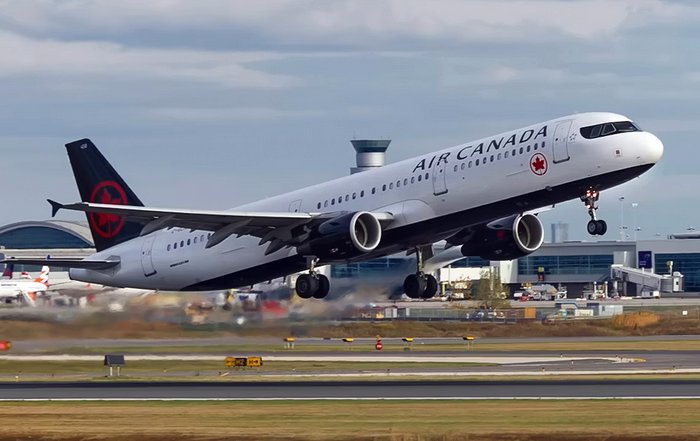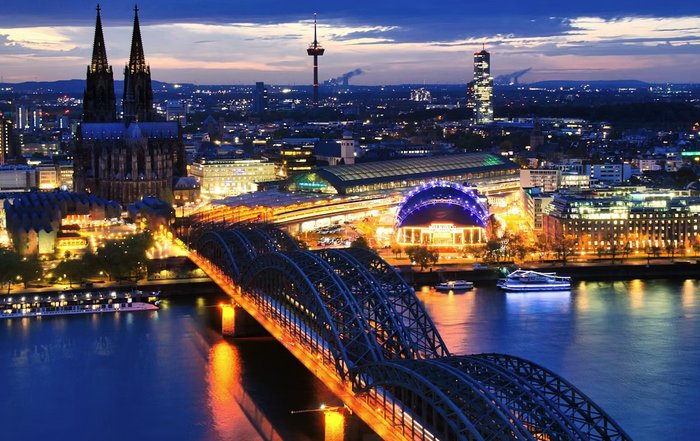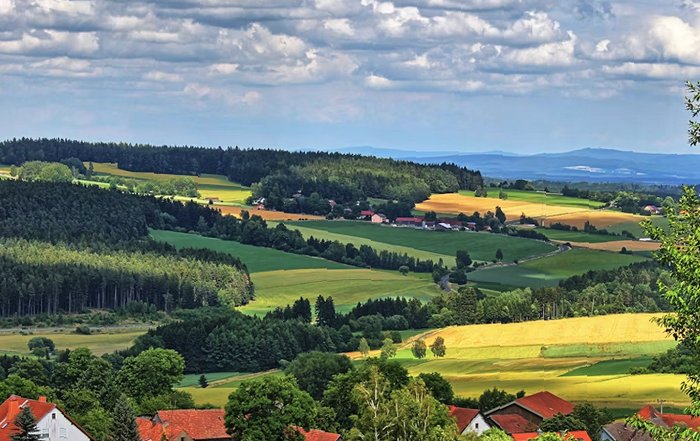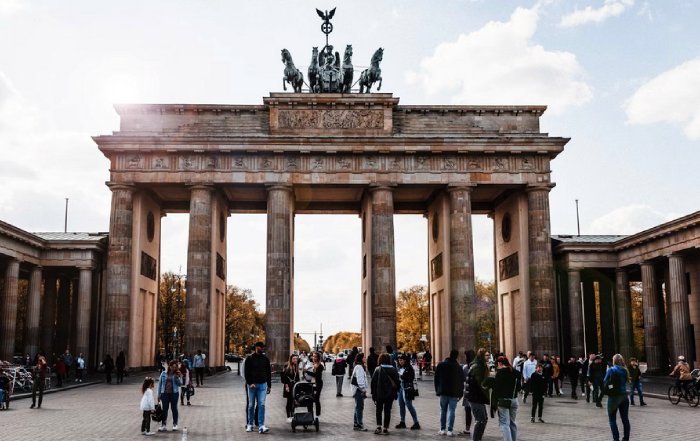Health and Nature Tourism Trends in France in 2025
France's New Tourism Identity: Where Wellbeing Meets the Wild
In 2025, France stands at a pivotal moment in its tourism evolution, redefining itself not only as a land of culture, gastronomy, and heritage, but increasingly as a global reference point for health and nature tourism. For the international audience of WorldWeTravel.com, which engages decision-makers, frequent travelers, and families from the United States, United Kingdom, Germany, Canada, Australia, and across Europe, Asia, and North America, France offers a compelling case study in how a mature tourism economy can pivot toward wellbeing, sustainability, and experiential value while preserving its natural and cultural capital.
As travelers recover from years of disruption and heightened health awareness, they are demanding more restorative, nature-connected, and medically-informed experiences. France, with its vast protected landscapes, refined healthcare infrastructure, and centuries-old spa traditions, is using 2025 to consolidate those strengths into a coherent health-and-nature value proposition that is resonating strongly with both leisure and business segments. For travel planners, corporate travel managers, and wellness-focused families using WorldWeTravel's travel hub, understanding these emerging trends in France is increasingly essential for designing itineraries that align with evolving expectations around wellbeing, sustainability, and work-life balance.
The Strategic Rise of Health and Nature Tourism in France
The shift toward health and nature tourism in France did not emerge overnight. It is the result of long-term structural changes in global tourism demand, accelerated by heightened awareness of physical and mental health, climate risk, and over-tourism in major cities. Organizations such as Atout France, the country's official tourism development agency, have articulated wellness, nature, and sustainable travel as central pillars of national strategy, and this is visible in both public policy and private investment. Interested readers can explore France's official positioning through Atout France's international portal.
At the same time, the global tourism ecosystem has been reshaped by demographic and behavioral shifts. Younger professionals increasingly combine work and travel, seeking destinations that support productivity, fitness, and mental clarity, while older travelers from Germany, the UK, and Scandinavia remain highly interested in medical and spa-based therapies. France's health system, consistently ranked among the world's best by sources such as the World Health Organization, has underpinned a growing segment of medical-adjacent tourism, with travelers seeking rehabilitation, convalescence, and specialist check-ups in conjunction with nature retreats. Those exploring broader trends in wellbeing can review global data from the World Health Organization.
For WorldWeTravel.com, which curates global insights across destinations, health, and work-related travel, France now represents a benchmark for how a mature tourism market can integrate its healthcare, environmental, and hospitality assets into a coherent health and nature offering that appeals to both high-net-worth travelers and value-conscious families.
From Thalassotherapy to Forest Bathing: France's Evolving Wellness Landscape
France's tradition of health tourism is centuries old, particularly in the form of thermal and thalassotherapy centers that have attracted visitors from across Europe. Coastal resorts in Brittany, Normandy, and the French Atlantic have long specialized in seawater-based therapies, while spa towns in the Alps, Pyrenees, and Massif Central have built reputations for thermal springs and balneotherapy. In 2025, these historic practices are being reimagined through a contemporary lens that integrates preventive medicine, sports science, nutrition, and mental health.
Leading wellness hotels and medical spas, many of them affiliated with or inspired by institutions such as Thermes Marins de Saint-Malo or Evian Resort, are now offering multi-day programs that combine hydrotherapy, personalized nutrition plans, sleep coaching, and guided nature immersion. The integration of digital diagnostics and remote follow-up, supported by France's robust e-health infrastructure, is enabling these retreats to offer measurable outcomes rather than simply experiential relaxation. For a broader understanding of how wellness is reshaping global travel behaviors, business readers can review trend analyses from the Global Wellness Institute.
In parallel, forest-based wellness has gained remarkable traction, with French tourism authorities and regional parks promoting forms of "sylvothérapie," or forest bathing, inspired by Japanese practices of shinrin-yoku. National and regional parks such as Parc National des Cévennes, Parc National des Écrins, and Parc Naturel Régional du Morvan are developing guided forest immersion programs that combine mindfulness, slow hiking, and sensory exercises, targeting stressed professionals from Paris, London, Berlin, and Amsterdam. Travelers seeking nature-focused itineraries can discover broader options via WorldWeTravel's global section, where France now consistently appears among the leading European destinations for restorative nature travel.
The Role of France's Protected Landscapes in Health Tourism
France's investment in protected landscapes is a central foundation of its health and nature tourism offering. With multiple national parks, marine protected areas, and regional nature reserves, the country has built a diversified portfolio of environments that support physical activity, mental restoration, and biodiversity-focused experiences. The French Ministry for Ecological Transition and agencies such as Parcs nationaux de France have increasingly framed these landscapes not only as conservation assets but also as pillars of long-term health resilience for residents and visitors. For comparative context on protected areas and their health value, readers can explore resources from the International Union for Conservation of Nature.
In 2025, international visitors are particularly drawn to the contrast between France's wild coastlines, mountain massifs, and rural river valleys. The Alps and Pyrenees support year-round health tourism, with winter focusing on low-impact snow sports and spa experiences, and summer emphasizing hiking, trail running, cycling, and altitude training. The French Riviera and Provence regions, long associated with sun and leisure, are now actively promoting off-season wellness stays that combine Mediterranean diets, yoga retreats, and nature excursions in the Luberon and Verdon regional parks.
For families and multigenerational groups, these landscapes offer an opportunity to align leisure with long-term wellbeing, combining children's outdoor education with grandparents' spa or rehabilitation programs in the same destination. Readers designing such itineraries can consult WorldWeTravel's family travel insights, where France frequently features as a versatile option for health-conscious family holidays that balance activity and rest.
Medical, Preventive, and Corporate Health Tourism
Beyond leisure-focused wellness, France is emerging as a competitive player in more structured health tourism segments, including preventive medicine, rehabilitation, and corporate health programs. The country's regulated healthcare system, presence of internationally recognized hospitals and clinics such as Hôpital Américain de Paris, and strong research institutions like INSERM and Institut Pasteur, lend credibility to medically supervised programs that integrate check-ups, diagnostics, and specialist consultations with restorative stays in nature. International travelers considering cross-border healthcare can explore comparative health system data via the OECD health statistics portal.
In 2025, a growing number of French clinics and wellness resorts are partnering with corporations from Germany, Switzerland, Scandinavia, and North America to design executive health assessments and burnout-prevention retreats. These programs typically include cardiovascular screening, metabolic testing, stress management coaching, and guided outdoor activities in the Alps, Vosges, or Basque Country, often with hybrid work facilities that enable executives to remain connected while prioritizing recovery. For businesses evaluating such programs as part of their duty-of-care or talent retention strategies, WorldWeTravel's business travel section offers frameworks for integrating health and wellbeing into corporate mobility policies.
Preventive health tourism is also expanding at the individual level, with French and international travelers booking multi-day stays that include nutritional counseling, physiotherapy, sleep analysis, and personalized fitness plans. Many of these programs draw on evidence-based guidelines from organizations such as the World Health Organization and European Society of Cardiology, while leveraging France's culinary heritage to demonstrate that healthy eating can remain pleasurable and culturally rich. Those wishing to deepen their understanding of preventive health principles can review guidance from the U.S. Centers for Disease Control and Prevention.
Technology, Data, and the Future of Personalized Wellbeing Travel
France's health and nature tourism transformation is increasingly shaped by technology, with digital tools enhancing personalization, safety, and measurement of wellbeing outcomes. The country's strong digital infrastructure and innovation ecosystem, supported by organizations like Bpifrance and La French Tech, has facilitated the growth of health-tech and travel-tech startups that serve both domestic and international visitors. Readers interested in the broader interplay of travel and innovation can explore WorldWeTravel's technology coverage, where France is frequently profiled as a leading European hub.
In wellness and health tourism, connected devices and apps now routinely track sleep quality, heart rate variability, step counts, and stress levels before, during, and after travel. Many French retreats and hotels provide integrated platforms that sync guests' wearables with on-site diagnostics, enabling practitioners to tailor programs in real time. Resorts in regions such as Auvergne, Occitanie, and Nouvelle-Aquitaine are partnering with sports scientists and digital health providers to offer endurance training camps and recovery programs backed by data rather than intuition.
Telemedicine has also become standard in many high-end health resorts, allowing visitors from Canada, Australia, Singapore, and Japan to receive pre-travel consultations and post-stay follow-ups without returning to France. This continuity of care increases trust among international clients and supports long-term behavior change, making retreats a catalyst rather than an isolated event. For a broader view of how digital health is shaping global healthcare delivery, business readers can consult analyses from the World Economic Forum.
Eco-Conscious Wellness: Sustainability as a Core Value Proposition
Health and nature tourism in France is inseparable from the wider sustainability agenda that is reshaping global travel in 2025. Travelers from Northern Europe, North America, and Asia-Pacific are increasingly scrutinizing the environmental impact of their trips, prioritizing destinations and providers that demonstrate credible commitments to carbon reduction, biodiversity protection, and local community engagement. French policymakers and industry leaders recognize that long-term competitiveness in health tourism depends on the integrity of the natural environments that underpin these experiences.
As a result, wellness hotels, eco-lodges, and nature retreats across Brittany, Corsica, Alsace, and Occitanie are investing in renewable energy, water conservation, and circular economy practices, often aligned with frameworks promoted by organizations such as the UN World Tourism Organization. Readers seeking to understand how sustainability standards are being embedded into tourism can explore resources from the UNWTO. Many French properties now hold eco-certifications such as Green Key or EU Ecolabel, and actively communicate their environmental performance to guests, who increasingly view sustainability as integral to personal wellbeing rather than a separate concern.
For WorldWeTravel.com, which maintains a dedicated focus on eco-conscious travel, France's integration of environmental stewardship with health-focused tourism is especially relevant. The country's model illustrates how destinations can move beyond superficial "green" messaging to embed sustainability into the design of wellness programs, from plant-based menus sourced from local farms to low-impact outdoor activities that respect wildlife and fragile ecosystems.
The Economic and Social Impact of Health and Nature Tourism
From an economic perspective, health and nature tourism in France is far more than a niche; it is an increasingly significant driver of regional development, employment, and innovation. Rural and semi-rural regions that once depended heavily on seasonal tourism or declining industries are leveraging wellness and nature-based experiences to attract year-round visitors and higher-value segments. This diversification is particularly visible in the Alps, Pyrenees, Auvergne, and parts of Burgundy and Occitanie, where wellness retreats, hiking lodges, and eco-hotels have revitalized local economies.
Organizations such as France Stratégie and the Banque de France have highlighted the potential of wellness and sustainable tourism to support balanced regional growth and reduce pressure on over-visited urban centers. For readers interested in macroeconomic perspectives on tourism and wellbeing, the International Monetary Fund and World Bank provide valuable analyses of tourism's contribution to national economies and human development. In France, the health and nature segment is seen as especially resilient, as it aligns with long-term demographic trends, including aging populations in Europe, Japan, and North America, and growing middle classes in Asia.
Socially, health and nature tourism is also contributing to renewed interest in local traditions, crafts, and agricultural practices. Many wellness retreats collaborate with regional producers of herbal infusions, essential oils, organic wines, and artisanal foods, thereby strengthening local value chains and cultural identity. Cultural immersion is increasingly positioned as part of holistic wellbeing, and travelers are encouraged to engage with local communities through guided visits, workshops, and festivals. Those wishing to explore the intersection of culture and wellbeing in travel can refer to WorldWeTravel's culture section, where France frequently features as a case study.
Accommodation, Hospitality, and the New Standard of Wellness
The hospitality sector in France has undergone a significant recalibration in response to health and nature tourism trends. Hotels, guesthouses, and serviced apartments across Paris, Lyon, Nice, Bordeaux, and Marseille are integrating wellness features as standard rather than optional extras, recognizing that business and leisure travelers alike now expect fitness facilities, healthy dining options, and access to outdoor spaces. Simultaneously, rural and coastal properties are differentiating through immersive nature experiences, spa facilities, and curated wellness programs.
International brands such as Accor, alongside independent boutique hotels and luxury groups like Relais & Châteaux, have expanded their wellness offerings, from in-room fitness equipment and sleep-optimized bedding to partnerships with renowned spa brands and nutrition experts. Increasingly, corporate travel policies and event planners specify wellness criteria when selecting venues for meetings, incentives, and retreats, making health-oriented features a competitive necessity. Travelers and corporate buyers comparing accommodation options can consult WorldWeTravel's hotels resource, where French properties are frequently evaluated for their wellness and sustainability credentials.
In mountain and coastal regions, chalet operators, agriturismo-style farms, and eco-lodges are offering integrated packages that combine accommodation, guided outdoor activities, and wellness services, often bundled with local transport and regional cuisine. This packaging reflects a broader trend toward seamless experiences, where travelers prefer a coherent, health-focused journey rather than assembling disparate components themselves.
Practical Considerations: Access, Safety, and Travel Planning
For international travelers considering France for health and nature tourism in 2025, practical considerations remain central to decision-making. France's extensive high-speed rail network, including TGV lines connecting Paris with major regional hubs such as Lyon, Marseille, Bordeaux, Lille, and Strasbourg, makes it possible to reach nature-rich regions without relying heavily on domestic flights, aligning with both environmental and health preferences. The country's airports maintain strong connections with North America, Asia, and the Middle East, ensuring accessibility for long-haul visitors.
Health and safety standards remain high, with France's public health authorities and institutions such as Santé publique France continuing to monitor communicable diseases, environmental risks, and emergency preparedness. Travelers are advised to review up-to-date health and vaccination recommendations through reputable sources such as the European Centre for Disease Prevention and Control and their national health agencies before planning extended wellness or medical stays. For broader health-focused travel guidance, WorldWeTravel.com maintains a dedicated health travel section, which synthesizes global best practices for safe and informed journeys.
In terms of planning, travelers increasingly rely on specialized advisors and digital platforms that understand the nuances of health and nature tourism, from insurance coverage for medical interventions to the accreditation of wellness centers. Corporate travel managers, in particular, are integrating wellbeing criteria into travel policies, ensuring that business trips and offsite meetings in France include opportunities for rest, movement, and nature immersion. For organizations seeking to align employee travel with wellbeing and productivity goals, WorldWeTravel's work and mobility hub provides strategic insights and case studies.
Looking Ahead: France's Position in Global Health and Nature Tourism
As of 2025, France's trajectory in health and nature tourism is both ambitious and grounded in substantial assets: a world-class healthcare system, diverse and protected natural environments, a sophisticated hospitality sector, and a cultural heritage that values balance, gastronomy, and art de vivre. The country is positioning itself not simply as a place to recover or relax, but as a destination where visitors can recalibrate lifestyles, develop healthier habits, and reconnect with nature in ways that endure beyond the trip itself.
For the international audience of WorldWeTravel.com, which spans families, solo professionals, corporate decision-makers, and wellness seekers from North America, Europe, Asia, Africa, and South America, France offers a compelling combination of accessibility, quality, and depth. Whether a family from Canada is planning a summer in the Alps, a team from Singapore is seeking a restorative corporate retreat in Provence, or an executive from the United States is combining a medical check-up in Paris with a digital-detox week in Corsica, France's health and nature tourism ecosystem can accommodate a wide range of expectations and budgets.
At a time when global travelers are re-evaluating the purpose and impact of their journeys, France's evolving model illustrates how destinations can create value by aligning economic development with human wellbeing and environmental stewardship. For those exploring where to go next and how to travel in a way that supports both personal health and planetary resilience, France deserves a prominent place on the shortlist, and the editorial team at WorldWeTravel.com will continue to monitor and analyze its progress across destinations, economy, and the broader global travel landscape.










